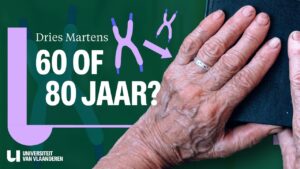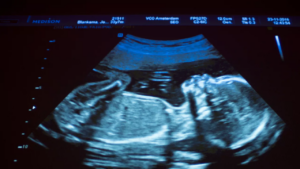In the Limburg birth cohort, the CMK is investigating how exposure to environmental factors very early in life determines later diseases. They measure the effects of air pollution and harmful substances in personal care products on the foetus and children.
The birth cohort that Professor Tim Nawrot set up from 2010 already includes 2,200 Limburg mothers and their children. And more are added every week. "This would never have been possible without the cooperation of the midwives at ZOL and, of course, the mothers and children themselves," he says. At birth, blood and placenta are collected. We try to map the exposure as closely as possible and measure the ageing processes in the cells. At ages 4 and 10, the children come to our campus again for cardiovascular and cognitive testing. We also collect a blood sample again then."
High blood pressure
Birth cohort background is DOHAD theory (developmental origins of adult health and disease) which says a lot of disorders later in life may have an early genesis. "We want to get an idea of what the environment does very early in life and how we can follow that up," says professor Michelle Plusquin. "The DOHAD hypothesis links conditions during pregnancy with risks of disease later in life. The importance of that very early life is the biggest question we are trying to solve."
"There are no children with high blood pressure yet, but there are already children whose blood pressure is rising faster than that of other children. Now this is not important but 30 years from now it might be," said Tim Nawrot.
Their approach is unique. "Birth cohorts did exist elsewhere, but we are the largest cohort studying ageing from birth. We study how cells age and look at telomeres, the caps at the end of chromosomes. We map those from birth; we were the first to do that worldwide. The strength of the study is that we can continue to follow up the children. Our lab is the Limburg children and their mothers."
Soot
"We see that the ageing process is triggered by environmental factors right from birth," Nawrot continues. "Children whose mothers were more exposed to air pollution during pregnancy are already biologically older. That shortening of telomeres does not recover and continues to weigh on. We also see that soot particles reach the foetus. Limburg is then not yet the most polluted area. So there is no safe threshold for air pollution."
"We are also looking at endocrine disruptors such as parabens, a type of preservatives often found in personal care products. We also see those levels coming down because some legislation has come in to ban parabens," Plusquin said. "In addition, we are also looking at positive things, such as how green can make our health better."
"During covid, we saw that young mothers living closer to greenery reported less stress," adds Nawrot.
Next 25 years?
"We hope to contribute to a better and safer world," says Tim Nawrot. "A major drawback of our research is that exposure is constantly changing, making it difficult to properly assess health risks. As a result, they are often underestimated. Standards are often made for healthy 30-year-olds, you just have to make them for individuals who are very sensitive."
"Even in 25 years' time, we hope to get permission from as many parents and children as possible to do our research. We have set it up so that new children can always join. Because of this, we also discover new trends," Michelle Plusquin concludes.





